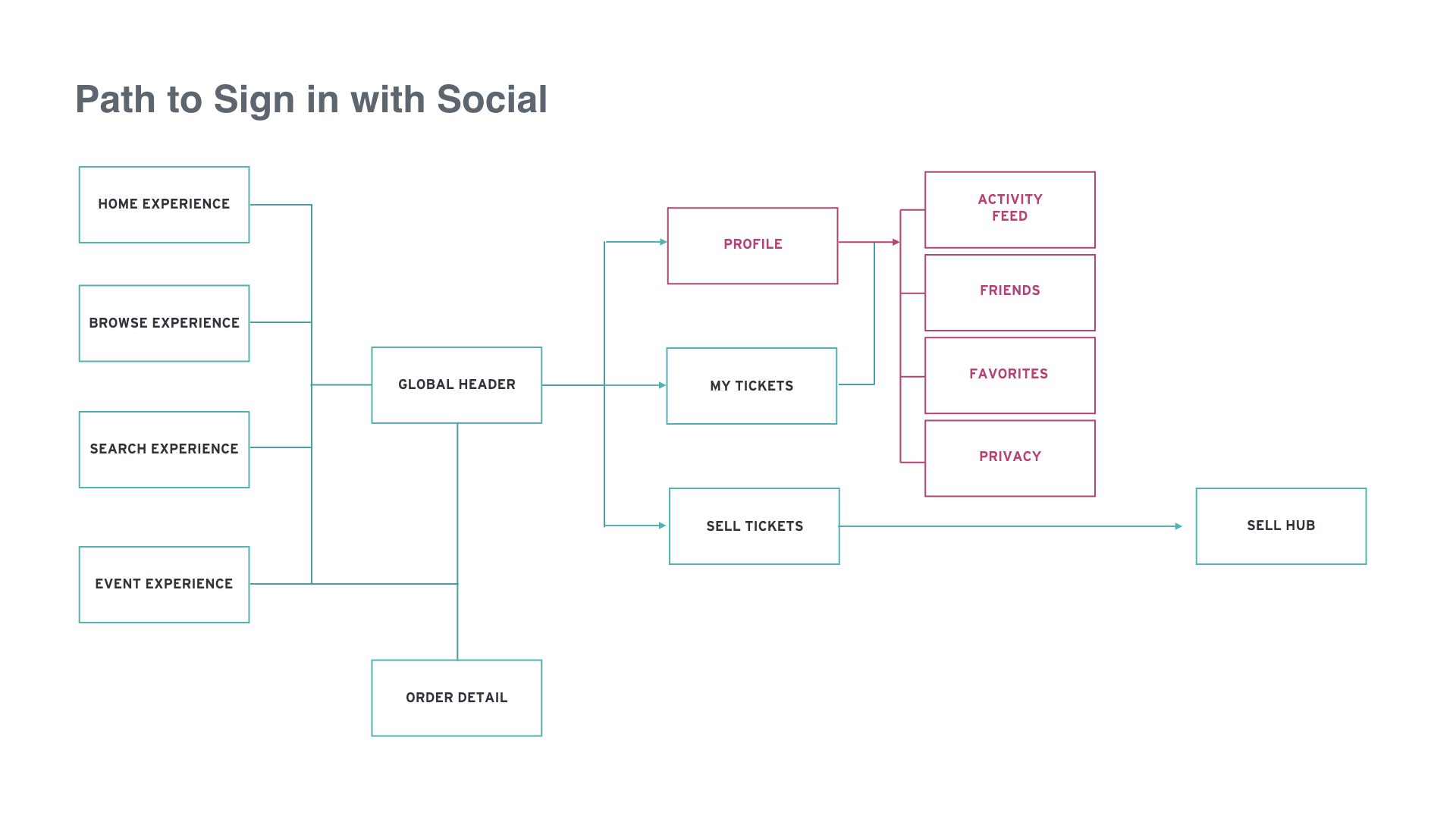My role
I led the design of the StubHub social experience between January and our launch in September 2017. I collaborated with two other designers, one on the profile team and one on the native app team. In addition, I worked alongside a researcher, content strategist and product manager. I also supported the development and testing process all the way up to the release.
Vision
Over the past 15 years, StubHub has established itself as a trusted source to get last-minute tickets to popular games, concerts and other events. Our vision was for event goers to use StubHub as part of their planning process, a destination for them to discover events and plan outings with their friends.
End-to-End Customer Journey Map
Insight
Event going is inherently a social experience. While our team understood this from our own experiences, the average order size metric validated our theory in the context of the business.
Qualitative Research
Behavior Design
Our team's first step was to bring our customer's social network on StubHub. I applied Fogg's behavior design model to drive the selection of Facebook connect at the StubHub login. According to Fogg's behavior model, the three components working together to change behavior are trigger, motivation and ability.
With that in mind, I designed three approaches that would explore the impact of the core motivators i.e. pleasure/pain, hope/fear, social acceptance/rejection.
- Need for connection: "Be connected"
- Need for recognition: "See and be seen"
- Value based motivation: "Get 10% off"
We conducted a user research study to get a qualitative understanding of what would motivate customers to connect on StubHub.
Qualitative Study Variants
CUSTOMER response
Findings
Privacy of purchases is a big concern when connecting StubHub to Facebook.
There is curiosity to around knowing what events their friends are planning to go see.
People were willing to share their activity if they could see their friend's activity.
Customers were apprehensive about the automatic connection language used to communicate the legal disclosure.
Out of the three experiences, the "see and be seen" message had the highest amount of sign-ups; over 50% of customers were willing to connect their StubHub account with Facebook.
The Dynamics of Relationships
The Challenge
To design a social experience that encourages discovery through social sharing. We chose to focus on the two tribes — Circle of Commitment and the Circle of Influence — that would represent archetypes within a social network in the context of live event experiences.
Archetypes
During my discovery process, I observed that there were two overarching customer archetypes. I developed these more thoroughly, to be able to understand their behaviors and meet their needs. The foundation of the social experience is designed to leverage the symbiotic relationship between the two archetypes.
The two customer archetypes are:
- The Enthusiast
- The Influencer
The Enthusiasts
A recommendation from the influencer sparks curiosity in the minds of the enthusiast, which will add meaning to the event.
The Influencers
The influencer enjoys the social status from of being connected to the zeitgeist and recognized as a trend settertrendsetter.
Experience Strategy
Brainstorming sessions with the product and the content team helped us map out the long-term experience strategy.
Hypothesis
If we design an event feed that helps the enthusiast discover what the influencer is doing, we can encourage event discovery through their network.
If we build planning features that helps make planning easier for the influencer, he/she can share their experiences with their enthusiast friends.
StubHub Social Experience - Phase 1
Event Feed
Once the customer connects their Facebook account to StubHub, they are able to see an event feed showing events their friends are interested in and the events their friends might be going to. The experience is designed to pique curiosity and encourage social planning.
Friends Feed
Here, friends can invite each other and manage their network.
The Social Experience in Action
User Flows
Sign-up disclosures
Based on the learnings from the qulaititaive study, I designed the legal disclosure flow to be clear and tethered to the customer's intention.
Information Architecture
Use Cases Galore
After the key aspects were defined, it was time to dig into the details. In-depth planning meetings with the development team brought to surface several edge cases that needed to be addressed and communicated effectively across all teams. Thanks to User Flows plugin by Abi, I was able to document all the if/else scenarios. This helped the development team all the way from scoping to testing.
Testing
To test the end-to-end experience, all the teams came together to recreate all possible scenarios to ensure that we were not missing anything.
Even our pets pitched in! I created test Facebook accounts so we could recreate the edge cases.
The first phase of this experience was launched in Fall 2017. This experience can be seen on StubHub.com and the StubHub iOS and android app.
Due to the sensitive nature of the information, some of the designs and strategy I developed has not been shared here.
Impact
Within 60 days of the launch, we saw about 3.8 M social sign ups on the platform.















